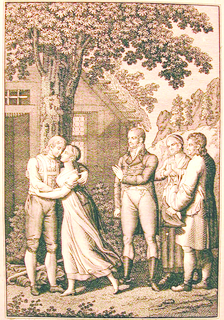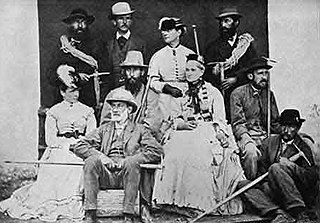The higher region of the Alps were long left to the exclusive attention of the inhabitants of the adjoining valleys, even when Alpine travellers began to visit these valleys. It is reckoned that about 20 glacier passes were certainly known before 1600, about 25 more before 1700, and yet another 20 before 1800; but though the attempt of P.A. Arnod in 1689 to "re-open" the Col du Ceant may be counted as made by a non-native, historical records do not show any further such activities until the last quarter of the 18th century. Nor did it fare much better with the high peaks, though the two earliest recorded ascents were due to non-natives, that of the Rocciamelone in 1358 having been undertaken in fulfilment of a vow, and that of the Mont Aiguille in 1492 by order of Charles VIII of France, in order to destroy its immense reputation for inaccessibility – in 1555 Conrad Gesner did not climb Pilatus proper, but only the grassy mound of the Gnepfstein, the lowest and the most westerly of the seven summits.

Piz Buin is a mountain in the Silvretta range of the Alps on the border between Austria and Switzerland. It forms the border between the Swiss canton of Graubünden and the Austrian state of Vorarlberg and is the highest peak in Vorarlberg.

Wilhelm Raabe was a German novelist. His early works were published under the pseudonym of Jakob Corvinus.

Jakob Fuggerof the Lily, also known as Jakob Fuggerthe Rich or sometimes Jakob II, was a major German merchant, mining entrepreneur, and banker. He was a descendant of the Fugger merchant family located in the Mixed Imperial City of Augsburg, where he was born and later also elevated through marriage to Grand Burgher of Augsburg. Within a few decades he expanded the family firm to a business operating in all of Europe. He began his education at the age of 14 in Venice, which also remained his main residence until 1487. At the same time he was a cleric and held several prebendaries, even though he never lived in a monastery. With an inflation adjusted net worth of over $400 billion, Fugger is held to be one of the wealthiest individuals in modern history, alongside the early 20th century industrialists John D. Rockefeller and Andrew Carnegie. At the time of his death in 1525, Fugger's personal wealth was equivalent to 2% of the GDP of Europe.

The Grand Master of the Teutonic Order is the holder of the supreme office of the Teutonic Order. It is equivalent to the grand master of other military orders and the superior general in non-military Roman Catholic religious orders. Hochmeister, literally "high master", is only used in reference to the Teutonic Order, as Großmeister is used in German to refer to the leaders of other orders of knighthood.

Philipp Matthäus Hahn was a German pastor, astronomer and inventor.

Klaus Merz, is a Swiss writer.

Dr Paul Güssfeldt was a German geologist, mountaineer and explorer.

The golden age of alpinism was the decade in mountaineering between Alfred Wills's ascent of the Wetterhorn in 1854 and Edward Whymper's ascent of the Matterhorn in 1865, during which many major peaks in the Alps saw their first ascents.

Adolphus Warburton Moore (1841–1887) was a British civil servant and mountaineer.

Gottlieb Samuel Studer was a Swiss mountaineer, notary public and draughtsman.
The silver age of alpinism is the name given in the United Kingdom to the era in mountaineering that began after Edward Whymper and party's ascent of the Matterhorn in 1865 and ended with W. W. Graham and party's ascent of the Dent du Géant in 1882.

Die Schweizer Familie is an opera by the Austrian composer Joseph Weigl. It takes the form of a Singspiel in three acts. The libretto, by Ignaz Franz Castelli, is based on the vaudeville Pauvre Jacques (1807) by Charles-Augustin de Basson-Pierre, known as Sewrin, and René de Chazet. The opera was first performed at the Theater am Kärntnertor, conducted by the composer, in Vienna on 14 March 1809 and was a great success in German-speaking countries in the early 19th century.
Franz Johann Joseph Bock (1823–1899) was a German theologian, archaeologist, and art historian.

Jakob Stutz (1801–1877) was a Swiss writer.

Jakob Anderegg was a Swiss mountain guide and the first ascensionist of many prominent mountains in the western Alps during the golden and silver ages of alpinism. Jakob Anderegg made the first ascent of the following peaks or routes:

Johann Wilhelm Fortunat Coaz was a Swiss forester, topographer and mountaineer from Graubünden. In 1850 he made the first ascent of Piz Bernina, the highest mountain in the Eastern Alps. He also gave Piz Bernina its name, after the eponymous pass.

Gottfried Ludwig Theobald was a German-Swiss geologist and cartographer.

The Abbey of St. Märgen is a former Augustinian canons monastery in St. Märgen in the Black Forest in Germany, which was founded around 1118 under the name Cella Sanctae Mariae. The German form of the name, Maria-Zell, changed over the centuries through Marienzell, Sante Merien and St. Mergen to the present name of the abbey and village, St. Märgen. The Baroque abbey church of St. Mary of the Assumption is today the Roman Catholic parish church of St. Märgen and one of the most important Marian pilgrimage churches in the Archdiocese of Freiburg.
This page is based on this
Wikipedia article Text is available under the
CC BY-SA 4.0 license; additional terms may apply.
Images, videos and audio are available under their respective licenses.
















